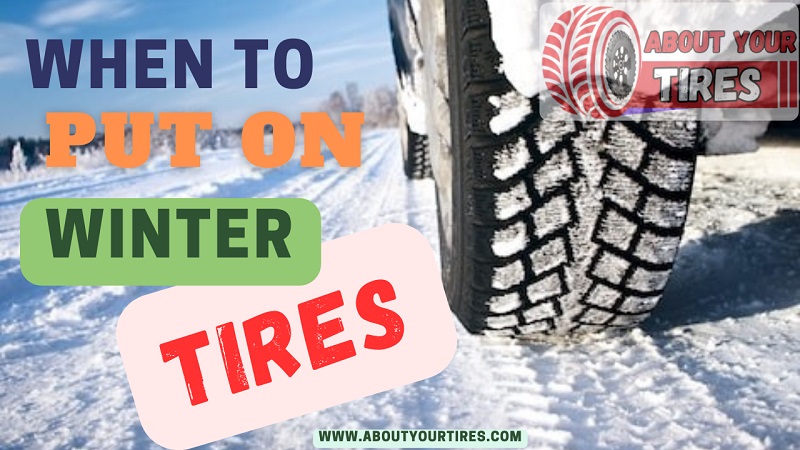Winter tires, also known as snow tires, are a vital component for those who grapple with cold, inclement weather while driving. These specialized tires are designed to offer enhanced traction in subfreezing temperatures, but it’s important to note that they’re not suitable for year-round use.
Most experts recommend making the switch to winter tires when the thermometer consistently registers below 45°F, though your local climate may influence this decision.
Before replacing your tires, always refer to your vehicle manufacturer’s guidelines regarding replacement tire options.
Determining the Optimal Time to Transition to Winter Tires
In general, summer or all-season tires tend to lose effectiveness as the mercury dips below 45°F. Consequently, when temperatures regularly fall into this range, it’s an opportune moment to consider switching to winter tires.
Many people in the United States have traditionally adhered to a rule of thumb, swapping to winter tires from Thanksgiving through Tax Day, covering the period from November to April. However, the timing may vary depending on your specific locale and daily driving schedule.
An important factor to consider regarding the 45°F temperature threshold is the time of day you typically drive. For early morning commuters, the coldest part of the day, when tires may perform less effectively, should be taken into account.
Why Winter Tires Are the Right Choice
Winter tires are engineered to excel in cold temperatures, offering superior grip on icy and snowy surfaces. In contrast, summer tires become stiffer and less pliable in colder conditions, leading to diminished traction in winter months. Summer tires are designed for warmer temperatures and dry roads, featuring shallower tread patterns and stiffer rubber compounds.
What Sets Winter Tires Apart?
Winter tires are crafted with specialized rubber compounds that remain flexible in frigid conditions. They sport deep tread patterns and sipes (tiny slits) that provide enhanced traction on snow and ice. This deep tread allows the tire’s contact patch to penetrate and grip slippery winter roads.
Crucially, it is recommended to always use a full set of four winter tires. Mixing tires with varying levels of grip can disrupt the vehicle’s balance and lead to a loss of control.
The Case for Winter Tires on All-Wheel Drive SUVs
While all-wheel drive offers superior traction when accelerating, it does not provide any advantage when it comes to braking grip. All four tires are responsible for braking, regardless of the vehicle’s drive configuration. By equipping your all-wheel drive vehicle with winter tires, you enhance both your stopping and cornering grip in addition to the acceleration grip.
When installing winter tires, it’s imperative to equip all four-wheel positions. Using only two high-grip winter tires on one end of the vehicle can create handling imbalances, whether you have a front-wheel, rear-wheel, or all-wheel drive vehicle.
However, if only two winter tires are installed, it is recommended to place them on the rear axle to minimize handling instability. For more information on the recommended positions for replacing only two tires, consult additional resources.
Is It Advisable to Use Winter Tires Year-Round?
Winter tires should not be used during warmer months. As temperatures rise, the extra-deep tread designed for snowy conditions becomes unnecessary, and the softer rubber compound wears more quickly on dry, warm roads. The combination of deep tread and soft rubber can lead to reduced performance in warm weather.
Transitioning Back to Summer or All-Season Tires
If you’ve opted for winter tires, it’s time to consider switching back to your all-season or summer tires when overnight ambient temperatures consistently remain above 45°F. This transition will maximize the life and performance of your winter tires.
Snow Tires vs. Studded Tires: Understanding the Difference
Snow tires are high-performance tires designed to handle snow, slush, ice, and freezing rain. They feature deep molded grooves and a directional tread pattern to channel water away from the tire surface, ensuring traction on wet and slushy roads.
In regions where driving on hard-packed snow and ice-covered roads is common, you may consider using winter tires that can be studded with ice-gripping traction studs, such as Goodyear’s Winter Command.
Studded tires incorporate plastic or metal studs to enhance grip on packed snow and ice. However, these studs are not suitable for non-snowy or icy road conditions and can potentially damage road surfaces. It’s essential to be aware of local laws, as some areas may prohibit the use of studs or impose restrictions on when they can be used.
Proper Storage of Seasonal Tires During Off-Season
Effective storage is key to prolonging the life of your tires. If you’re transitioning from summer or all-season tires to winter tires, you must store your unused tires properly to ensure they’re ready for action when the sun reclaims the sky.
Ideally, store them indoors in a cool, dry environment, away from direct sunlight. To learn more about seasonal tire storage tips and the correct procedures for tire storage, consult additional resources.
Please refer Wikipedia on this topic for more information.

